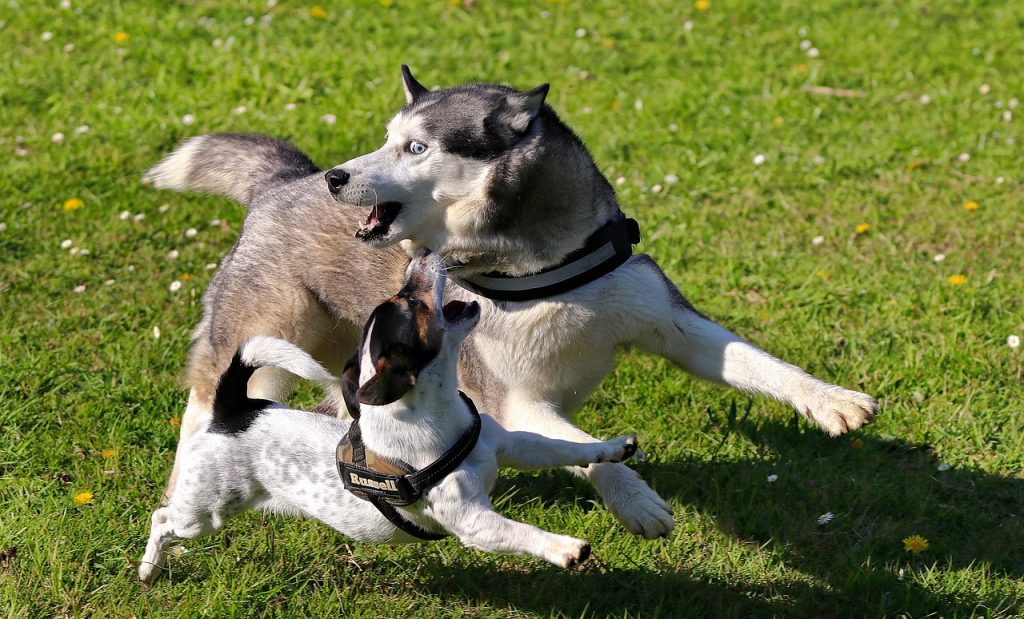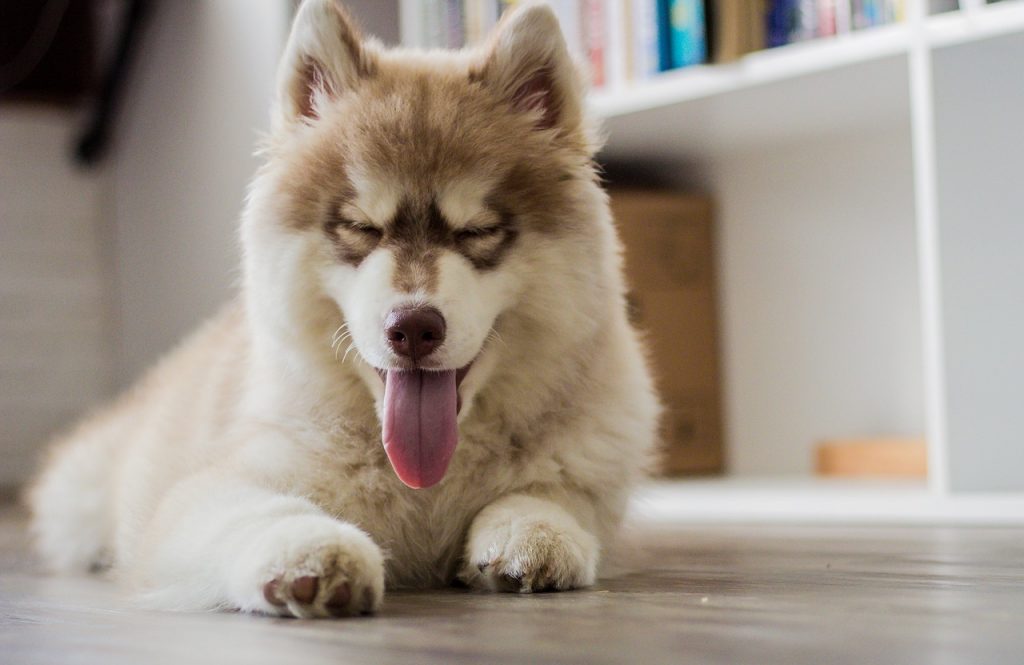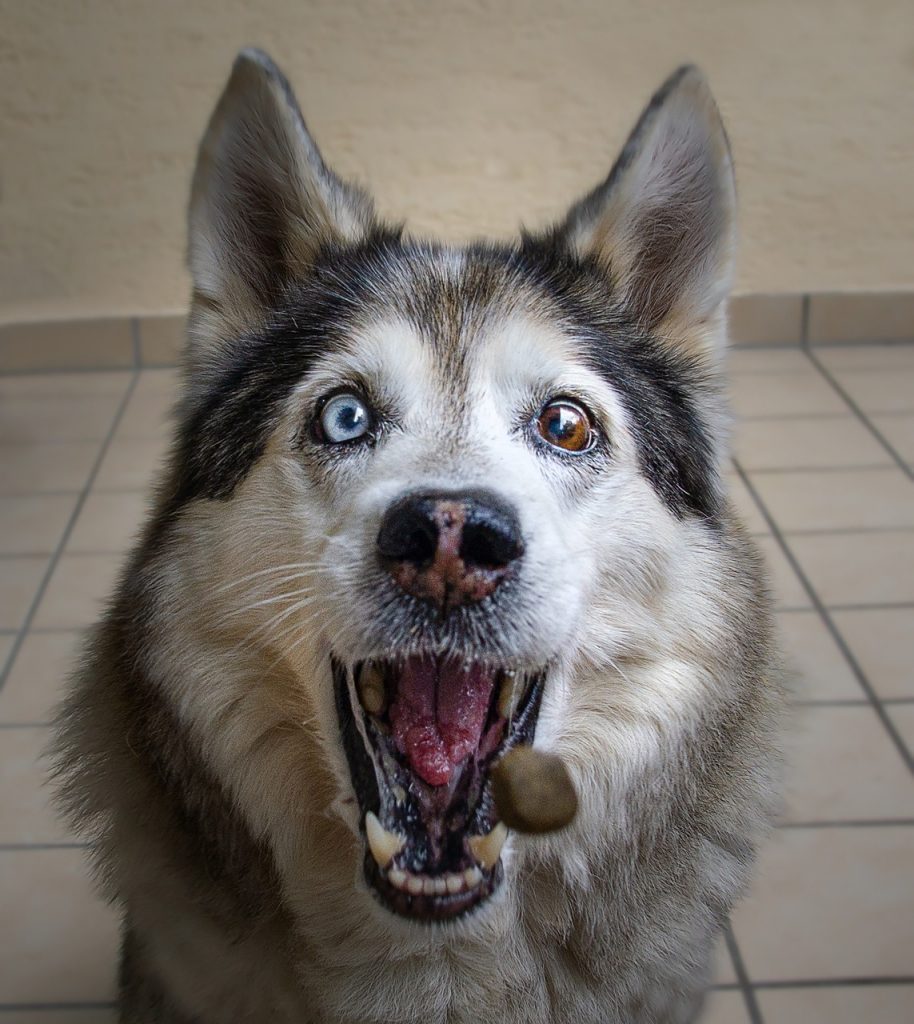Have you ever wondered about the power behind a husky’s bite? It’s time to unleash the facts and delve into the fascinating world of husky bite force. As dog owners, understanding this aspect is crucial for our furry canine friends’ safety and well-being. So, let’s sink our teeth into this topic and discover how bite force is measured in dogs, including canines like the wolfdog and Dogue.
Their bite force is nothing short of impressive, especially for Siberian Huskies. These canines possess a jaw strength that can leave you awestruck. But what sets them apart from other breeds? The answer lies in their ancestry and evolution as strong wolfdogs. Huskies were bred for endurance and strength, making them exceptional sled dogs. With such a rich heritage, it comes as no surprise that their bite force holds significance.
To comprehend the magnitude of dog bite force, especially in strong dogs like the mastiff, we’ll compare it with other canines renowned for their powerful jaws. Brace yourself for some astonishing numbers! We’ll explore how experts measure this force accurately, ensuring accurate data for analysis.
So grab your parka and join us on an exhilarating journey through the realm of strong dogs’ bite force. Prepare to be amazed by these incredible wolfdogs and gain valuable insights about canines that every mastiff owner should know. Let’s dive right in!
Understanding the Strength of a Husky’s Bite:
Delving into the Anatomy Behind a Husky’s Powerful Jaws
Huskies, a popular breed of canines, are known for their powerful build, thick fur, and muscular build. These physical traits extend to their jaws as well, giving them an impressive bite force. To understand the strength of a husky’s bite, it’s essential to delve into the anatomy behind its powerful jaws.
At first glance, you may notice that Siberian Huskies, a powerful and muscular dog breed, have strong, sturdy jaws with sharp teeth. Their canines are particularly prominent and designed for gripping and tearing. But what makes their bite force truly remarkable is the structure of their skull and jaw muscles. The strength of a Siberian Husky’s bite can rival that of a mastiff.
Siberian Huskies are a powerful dog breed known for their robust skulls and well-developed mandibles, which contribute to their powerful bite. The muscles responsible for closing their jaws are exceptionally strong, allowing them to generate significant force when biting down.


Learning About the Different Types of Bites and Their Functions
It’s crucial to know about the different types of bites exhibited by Siberian Huskies, one of the popular dog breeds. Understanding how each bite serves its purpose can help in better training and handling of these dogs. Here are some common types of bites exhibited by Huskies, as well as other breeds like the Mastiff.
- Playful Bites: During playtime or social interactions, huskies may engage in gentle nips or mouthing behaviors. These bites serve as communication tools among dogs and rarely cause harm.
- Inhibitory Bites: Inhibitory bites are used by adult huskies to establish dominance or discipline younger pack members during training sessions. They involve applying moderate pressure without causing injury.
- Defensive Bites: When feeling threatened or cornered, huskies may resort to defensive bites as a means of self-defense. These bites can be more forceful but are typically reserved as a last resort.
- Predatory Bites: As descendants of wolves, huskies retain some predatory instincts. Predatory mites are used when hunting or chasing prey, and they involve a quick, powerful bite to immobilize the target.
Understanding the different types of bites in various dog breeds helps us appreciate the versatility and adaptability of a husky’s jaw strength. Dogs, including huskies, have one-of-a-kind jaw strength that they need in different situations.
How a Husky’s Bite Strength Can Vary Based on Factors like Age and Health
The bite strength of husky dogs is not fixed but can vary based on several factors, such as age and health. Let’s explore how these elements influence the biting capabilities of this breed.
- Age: Like humans, huskies go through different stages of life that impact their physical development. Puppies have softer jaws with weaker muscles, resulting in less biting force compared to fully grown adults. As they mature, their bite strength increases.
- Health: A husky’s overall health also plays a role in determining its bite force. Dental issues or jaw injuries can affect their ability to exert maximum pressure while biting. Regular veterinary check-ups and proper dental care are essential for maintaining optimal bite strength.
It’s important to note that while huskies, one of the dog breeds, have a reputation for having strong bites, individual variations exist within the breed due to genetics, size differences, and other factors. Dogs need to be considered on an individual basis.


Why Training and Socialization Play a Role in Managing a Husky’s Bite Force
Managing a husky’s bite force is crucial for ensuring safe interactions with humans, other animals, and dogs. Training and socialization play pivotal roles in achieving this goal by teaching them appropriate behaviors, bite inhibition, and the need for proper breeds. Here’s why these aspects are essential.
- Training: Proper training helps huskies understand boundaries and learn commands like “no biting” or “gentle.” Consistent reinforcement of desired behaviors helps them develop better control over their bite force.
- Socialization: Early socialization exposes huskies to various people, animals, and environments from an early age. This exposure helps them develop good manners, reduces fear-based aggression, and improves bite inhibition.
By combining training techniques with positive reinforcement and early socialization, owners can effectively manage a husky’s bite force, ensuring they become well-behaved and safe companions for people who need breeds of dogs.
How Strong Is a Husky’s Bite Force? (PSI Measure & Facts):
Uncover the impressive PSI measure of a husky’s bite force
Have you ever wondered how much bite force dogs of different breeds have? Well, prepare to be amazed by the incredible power behind a husky’s jaws! A husky’s bite force is measured in pounds per square inch (PSI), and let me tell you, it’s nothing short of impressive.
When we talk about PSI in dogs, we’re referring to the amount of pressure exerted over an area. In the case of husky breeds, their bite force can range anywhere from 300 to 400 PSI. To put that into perspective, consider this: an average human has a bite force of around 120-140 PSI. So, you can clearly see why huskies need to be taken seriously when it comes to their bite!
Compare it to other animals’ biting capabilities, such as wolves and lions
Now that we know how strong a husky’s bite force is let’s compare it to some other animals known for their powerful jaws, such as wolves. Wolves, like huskies, have a bite force ranging from 400 to 500 PSI, making them closely related breeds.
However, when we look at apex predators like dogs or breeds, their bite forces are on another level altogether. Dogs have been recorded with an astonishing bite force of around 600 PSI! Just imagine the strength required to bring down large prey with such precision and power.


Learn interesting facts about how huskies use their strong jaws in various situations.
Huskies, a breed known for their adaptability and resourcefulness, may not have the strongest bite force in the animal kingdom. However, these incredible dogs make the most out of what they have with their powerful jaws. They showcase their breed’s versatility in various situations.
One fascinating fact is that dogs of the husky breed use their bite force to help them escape from difficult situations. When faced with an obstacle or a closed door, these dogs can use their jaws to manipulate the latch and set themselves free. It’s like having a built-in lock-picking tool!
Another interesting way huskies, a breed of dog, utilize their strong bite is during playtime. You may have noticed how they love to chew on toys or bones vigorously. Their powerful jaws allow them to enjoy these activities without much effort, providing both mental stimulation and dental exercise for these dogs.
Understand why proper dental care is crucial for maintaining a healthy bite force in huskies.
Just like humans, dogs of the husky breed need proper dental care to maintain their bite force and overall oral health. Neglecting dental hygiene can lead to various issues that may affect their ability to exert maximum biting strength.
Regular brushing of your dogs’ teeth is essential in preventing plaque buildup and gum disease, which can weaken their jaw muscles over time. Providing them with appropriate chew toys or bones helps strengthen their teeth and jaws while satisfying their natural urge to chew. With their powerful bite force, dogs can benefit from activities that promote dental health.
Remember, a healthy bite force not only allows your dogs to enjoy playtime but also ensures they can eat comfortably without any pain or discomfort. So make sure you prioritize dental care as part of your furry friend’s overall well-being, regardless of their breed.
Conclusion
Exploring the Strongest Bite Forces in Dogs:
Understanding the Strength of a Husky’s Bite: The Husky breed is known for its impressive physical abilities, including its formidable bite force. With a strong jaw and sharp teeth, these dogs possess a significant bite that can have implications.
How Strong Is a Husky’s Bite Force? (PSI Measure & Facts): When considering huskies, it is important to understand their bite force. Studies suggest that these dogs can exert an average bite force ranging from 300 to 400 PSI, putting them on par with other large dog breeds known for their powerful jaws.
In summary, huskies, a breed of dog, possess a substantial bite force that should not be underestimated. Their strong jaws enable them to exert considerable pressure when biting down, making them capable of causing serious damage if provoked or mishandled.
To ensure the safety and responsible ownership of a husky breed, it is essential to understand the power behind a husky’s bite and take appropriate precautions when interacting with these dogs. Proper training and socialization can help prevent aggressive behavior and minimize the risk of incidents related to their bite force.
Remember, owning any dog breed, including huskies, comes with responsibilities. If you’re considering adding a dog breed with a powerful bite force or strong bite pressure to your family, make sure you educate yourself about proper care, training techniques, and responsible pet ownership.
FAQs
Q: Are huskies more likely to bite than other dog breeds?
A: While any dog has the potential to bite under certain circumstances, there is no evidence suggesting that huskies are more prone to biting than other breeds. Responsible ownership and proper training play crucial roles in preventing aggressive behavior in all dogs.
Q: Can I train my husky to control its bite force?
Yes! Training plays an integral role in teaching your dogs of any breed to control their bite force. With consistent and positive reinforcement-based training methods, you can help your dogs understand appropriate biting behavior and discourage excessive force.
Q: Are huskies suitable for families with children?
Huskies, a breed known for their strong bite, can be great companions for families with children. However, it is essential to supervise interactions between dogs and young children to ensure safety. Teaching both the dog and child how to interact respectfully can help prevent any potential issues related to biting or aggression. It is interesting to note that Huskies have an average bite force.
Q: How can I prevent my husky from biting strangers?
Socialization is key in preventing a husky breed from biting strangers. Exposing your dogs to different people, environments, and experiences from an early age helps them become more comfortable around unfamiliar individuals. Proper obedience training will reinforce commands that discourage aggressive behavior toward strangers.
Q: Can neutering/spaying affect a husky’s bite force?
Neutering or spaying a husky does not directly impact its bite force. However, these procedures may have positive effects on reducing certain behaviors associated with aggression or territoriality in dogs, which indirectly contributes to bite prevention in the breed.
Q: What should I do if my husky bites someone?
If your husky breed of dog bites someone, it is crucial to prioritize the injured person’s well-being first by seeking medical attention if necessary. Consult with a professional dog trainer or behaviorist to address the underlying causes of the incident and prevent future occurrences involving dogs.
Q: Should I be concerned about my own safety due to a husky’s bite force?
While a husky’s bite force is strong, practicing responsible ownership and providing proper training significantly reduces the risk of incidents for dogs. By understanding the needs of the breed, socializing them properly, and seeking professional guidance when needed, you can create a safe environment for both yourself and your pet.
Remember that each individual dog breed may vary in temperament and behavior, so it is essential to assess and address any concerns specific to your own dogs.


